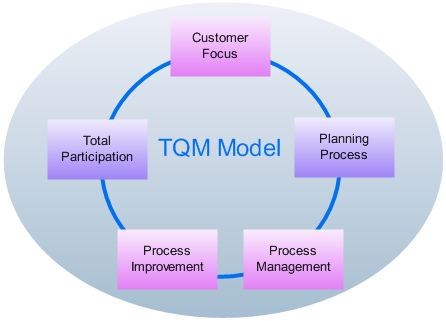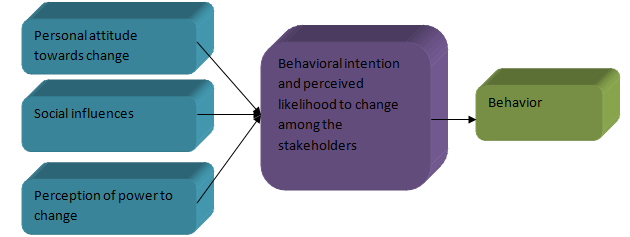Introduction
Leadership is important for an organization to succeed in achieving its objectives. In education, leadership is necessary in steering both learners and staff towards achieving specific academic goals. In this sector, leadership is necessary in order to bring order among students, and motivation among staff.
This will help in ensuring that when new policies are developed, all the relevant stakeholders will be able to accept this change with a positive attitude (Evers & Lakomski, 2000). Change is one of the most important factors that an organization must take into consideration when drawing its strategic goals and objectives. This is because education in itself involves change among the learners (Ajzen, 2007).
The learning process involves imparting new ideas to the learners so that they may have a new and better perception to life. In a learning environment, change is inevitable, and the concerned leaders must always find a way of making it acceptable to stakeholders, especially learners. This research focuses on the effect of planned change within a school setting using management and change theories.
Discussion
Change has always been considered as a factor that cannot be avoided within an organization. According to Stephenson and Yorke (1998), it is important to note that positive change is the main ingredient that has made some of the leading firms in the world to be very successful. In a learning environment, change is always viewed from two perspectives.
The first perspective is always on the teaching and non-teaching staff that is responsible in ensuring that an enabling learning environment is created within the learning institution. The second focus on change within a firm is on the learners. These two groups should be given two approaches when implementing change policies.
Cultivating Change among the Staff
When managing change among the teaching and non-teaching staff, care should always be taken to ensure that the approach used to bring change is that which is easily acceptable to them (McCarthy, 2010). It is important that the relevant leaders avoid scenarios where the staff would feel that this change is meant to demean them other than to make a positive step towards success of the institution.
This would mean that the leader must employ elements of transformational leadership in order to achieve this. As Williams (2002) observes, it takes a transformational leader to ensure that employees embrace change without developing unnecessary resistance that may affect the organization negatively. Some of the most appropriate models that a leader should use when bringing change among staff are discussed below.
Total Quality Management
Total quality management is one of the models that can be used by leaders to ensure that the staff embraces change in their places of work. According to Armitage (2004), total quality management involves a planned change management with a sharp focus on quality of products offered to the customer.
This theory emphasizes on the need to plan. The focus starts with understanding the needs of the customers and end with customer satisfaction (Kia, 1998). In an education system, the staff must realize that their customers who need satisfaction are the learners. The figure below shows the activities involved when implementing total quality management policy as an approach of managing change.
Figure 1: Total Quality Management

Source (Russell & Russell, 2006)
The model shows that success in change management needs planning as a process to be part of change management. The management must also ensure that all the relevant stakeholders are appropriately involved in the process of bringing change within an organization.
Appropriate theory for change in a school setting
A number of models for change are used by various organizations given different scenarios. Some of the most popular models of change include ADKAR Model for change, Stephen Covey Seven Habits Model, Kubler Ross Stages of Change and Kurt Lewin’s Strategy of Unfreeze-Change-Refreeze (Myers, Hulks & Wiggins, 2012). These strategies are suitable in different scenario.
They have their own advantages and disadvantages that makes each most suitable in different applications. Given the scenario of a school setting, the best model would be Kurt Lewin’s three staged Model of Change Management of Unfreeze, Change, and then Freeze (Begley, 1999). This is demonstrated in the diagram below.
Figure 2: Kurt Lewin’s Model of Unfreeze-Change-Refreeze

Unfreeze is the first stage where the firm would need to appreciate that given the current environmental forces, there is need for change (Williams, 2002). As such, every member of the organization prepares psychologically for a possible change. After unfreezing, the next step is change (Bardes, 2008).
The members, having accepted the need for change, would embrace the same and adopt new strategies brought about by change. This stage is also known as the transition because it is the process where the relevant authorities will be changing from one approach or strategy to another.
The freezing stage, also known as refreezing, involves establishing stability after the adoption of change. All the staff members in this learning institution must understand their role at every stage.
Cultivating change among the learners
According to Leonardius and McGuire (2007), education leadership is one of the most challenging forms of leadership in the contemporary world. A leader in any learning institution must understand that he or she is dealing with two categories of people. The first category includes the teaching and non-teaching staff. These are adults and must be treated as such in order to earn their respect.
The second group includes the students. Dealing with learners is a very complex task because at times they are irrational, making them very unpredictable (Banutu, 2004). This means that when managing them, a leader must find a way of ensuring that he or she understands them in a way that will make it possible to initiate change among them without any opposition from them.
Resistance to change may affect a possible success that results from successful implementation of new policies. Scholars have come up with a number of theories that can be used to bring change in a learning environment, especially when dealing with the learners (Baekdal, 2006). Some of the possible theories of change management that can be used by leaders in this setting include the following.
Theory of Planned Behavior
The researcher has been in the field of education for some time. The experience gathered from this field has made the researcher understand the complexity of dealing with learners. They tend to be radical when forced with change, especially when they feel that this change is meant to intimidate them (Goolnik, 2006). Theory of planned behavior may be the most appropriate theory that can be used to make these learners embrace change.
This theory upholds that in some cases a learner may not be ready for a change that is being proposed by the leaders (Bird, 2007). This theory also holds that the perception towards change depends on various influences on the learners, including the influence from peers, parents, teachers and other people they socialize with at school or at home. The diagram below elaborates these forces.
Figure 3: Theory of planned behavior

This theory holds that the ability of people to accept change depends on their attitude towards change. According to Huston (2004), learners are always affected massively by the attitude they develop towards certain issues. When this attitude is poor towards a given policy, then bringing change towards this issue can be very complex.
This theory therefore, suggests that the best way of dealing with this attitude is to take care of the forces that influence attitude. By changing influencing these forces, the idea will be that these forces will then influence learners to act in a desired manner (Argyris, 1999). This will help cultivate change among the learners.
Conclusion
The discussion above demonstrates the fact that cultivating change among people within a learning institution is a complex process. For a leader to come up with new policies in such an institution, it is important to understand the stakeholders involved in the process of bringing change.
In this scenario, a leader must know that the approach taken to influence the staff to embrace change may not be the same approach when dealing with learners. While the staff has adults who would want to be treated with respect, learners need to be influenced through peers and other forces to make them act in a desirable manner.
References
Ajzen, I. (2007). Attitudes, Personality and Behavior. Maidenhead: McGraw-Hill International Limited.
Argyris, C. (1999). On organizational learning. Malden: Blackwell Business.
Armitage, C. J. (2004). Planned behavior: The relationship between human thought and action. New Brunswick: Transaction Publishers.
Baekdal, T. (2006). “Handle change management projects more effectively,” Change Management Handbook, 1(27), 7-57.
Banutu, M. (2004). Great leaders teach exemplary followership and serve as servant leaders, Journal of American Academy of Business, 4(1), 143-151.
Bardes, R. (2008). Effects of Social Loafing on Organization, European Journal of Work and Organizational Psychology, 17(2), 180-197.
Begley, P. T. (1999). Values and educational leadership. Albany: State University of New York Press.
Bird, A. (2007). Team structure and success as related to cohesiveness and leadership, Journal of Social Psychology, 103(2), 217-223.
Evers, C. W., & Lakomski, G. (2000). Doing educational administration: A theory of administrative practice. Oxford: Pergamon.
Goolnik, G. (2006). “Effective Change Management Strategies”, Turkish Online Journal of Distance Education-TOJDE, 7(1), 10-78.
Huston, S. A. (2004). Theory of planned behavior: Understanding women’s decisions about hormone replacement therapy. New Jersey: Wiley.
Kia, B. (1998). Capacity assessment and development: In a systems and strategic management context. New York: United Nations Development.
Leonardius, D., & McGuire, M. (2007). The executive guide to understanding and implementing the Baldrige criteria: Improve revenue and create organizational excellence. Milwaukee: ASQ Quality Press.
McCarthy, C. (2010). “Ways of Managing Social Loafing within a Firm,” Healthcare Information and Management Systems Society, 1(39), 20-41.
Myers, P., Hulks, S., & Wiggins, L. (2012). Organizational change: Perspectives on theory and practice. Oxford: Oxford University Press.
Russell, J., & Russell, L. (2006). Leading change training. Boston, MA: Elsevier.
Stephenson, J., & Yorke, M. (1998). Capability and quality in higher education. London: Kogan Page.
Williams, A. (2002). Managing change successfully: Using theory and experience to implement change. London: Thomson.